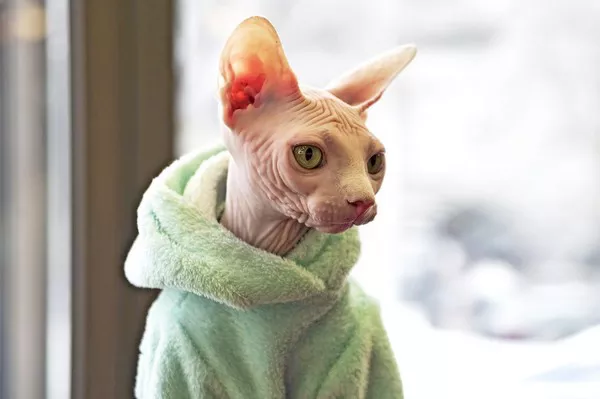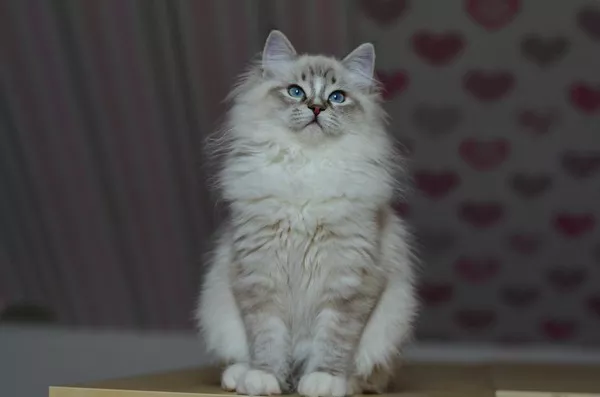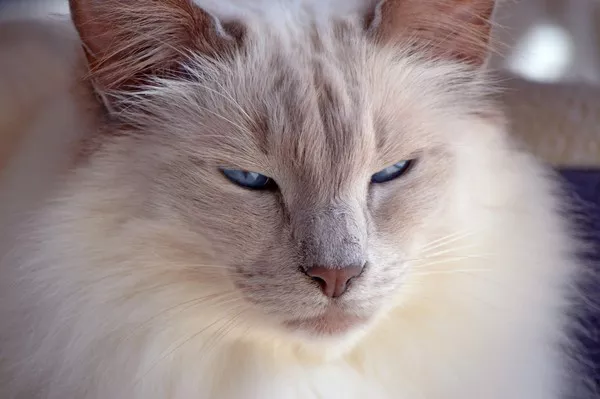Sphynx cats, often referred to as the “hairless wonders” of the feline world, have a unique and captivating appearance that sets them apart from other cat breeds. Their nearly bald bodies, large ears, and wrinkled skin make them unmistakable and endlessly fascinating. Have you ever wondered how these intriguing felines are bred? In this comprehensive guide, we’ll dive into the world of Sphynx cat breeding, exploring their history, breeding process, care, and what makes them truly exceptional.
The Origin and History of the Sphynx Cat
Before delving into the breeding process, it’s essential to understand the origins and history of the Sphynx cat breed. Contrary to popular belief, these cats aren’t entirely hairless; they possess a fine layer of fuzz that gives them their unique texture.
The Sphynx cat’s story begins in the 1960s when hairless kittens were born to domestic shorthair cats in various parts of the world, including Canada and the United States. Breeders recognized the potential of this genetic mutation and embarked on a journey to develop a new breed with a distinctive appearance.
The first recognized Sphynx cat was Prune, born in 1966 in Toronto, Canada. Prune became the foundation of the breed, and breeders selectively crossed him with other cats to establish the Sphynx breed’s distinct characteristics.
The Breeding Process of Sphynx Cats
Breeding Sphynx cats is a meticulous and ethical process that prioritizes the health and well-being of the cats involved. Here are the key steps in breeding Sphynx cats:
Selecting Breeding Cats: Ethical breeders carefully choose breeding cats with excellent health, temperament, and conformity to breed standards. Cats are tested for hereditary diseases and screened for any health issues.
Breeding Pairs: Once suitable breeding cats are selected, breeders pair them based on their genetic compatibility and traits. The goal is to produce kittens that conform to the Sphynx breed standard, with distinct features like wrinkled skin, large ears, and a hairless or nearly hairless coat.
Genetic Testing: Responsible breeders perform genetic testing to identify carriers of hereditary diseases like hypertrophic cardiomyopathy (HCM), a common issue in Sphynx cats. Avoiding breeding pairs with a higher risk of producing kittens with HCM is a priority.
Health and Care: Throughout the breeding process, the health and well-being of the breeding cats are closely monitored. Proper nutrition, regular veterinary check-ups, and a clean and safe environment are essential.
Pregnancy and Birth: Once the breeding pair successfully mates, the female cat undergoes a pregnancy that typically lasts around 63 days. Breeders provide extra care and nutrition during this period. After birth, kittens are closely monitored for health and growth.
Socialization: Early socialization is crucial for Sphynx kittens to ensure they grow up to be well-adjusted and sociable cats. Breeders expose them to various environments, people, and experiences.
Adoption: Ethical breeders carefully screen potential adopters to ensure they can provide a loving and suitable home for the kittens. Kittens are typically ready for adoption at around 12 to 16 weeks of age.
Spaying and Neutering: Responsible breeders often require adopters to spay or neuter their Sphynx kittens to prevent irresponsible breeding and control the cat population.
Caring for Sphynx Cats
Sphynx cats require specialized care due to their unique appearance and characteristics:
Skin Care: Their hairless or nearly hairless skin needs regular bathing to remove excess oils and maintain cleanliness. Breeders often introduce kittens to bathing from a young age.
Sun Protection: Sphynx cats lack fur to protect their skin from the sun. They are vulnerable to sunburn, so it’s essential to keep them indoors or provide sunscreen when they venture outside.
Temperature Sensitivity: Due to their lack of fur, Sphynx cats are sensitive to temperature changes. They should be kept warm during colder months and protected from extreme heat.
Regular Vet Visits: Routine veterinary check-ups are crucial for monitoring their health, especially for potential issues like HCM.
Social Interaction: Sphynx cats are known for their affectionate and social nature. They thrive on human companionship and enjoy being part of the family.
What Makes Sphynx Cats Truly Exceptional?
Beyond their striking appearance, Sphynx cats have several unique qualities that endear them to their owners:
Affectionate Personalities: Sphynx cats are known for their friendly and affectionate nature. They love cuddling, sitting on laps, and being the center of attention.
Playful and Energetic: These cats have a playful and curious disposition, making them delightful companions for families and individuals alike.
Hypoallergenic Qualities: While not entirely hypoallergenic, Sphynx cats tend to produce fewer allergenic proteins, making them a better choice for some allergy sufferers.
Interactive Communication: Sphynx cats are vocal and communicate with their owners through a variety of vocalizations and gestures.
Unique Appearance: Their hairless or nearly hairless bodies, combined with their wrinkled skin and large ears, make them one of the most visually distinctive cat breeds.
Conclusion
Breeding Sphynx cats is a meticulous process that aims to preserve and enhance the breed’s unique characteristics while prioritizing the health and well-being of the cats involved. These remarkable felines, with their captivating appearance and affectionate personalities, continue to win the hearts of cat enthusiasts worldwide. Whether you’re a seasoned Sphynx cat owner or considering adopting one, understanding the breeding process and caring for these special cats will undoubtedly deepen your appreciation for the “hairless wonders” of the feline world.


























